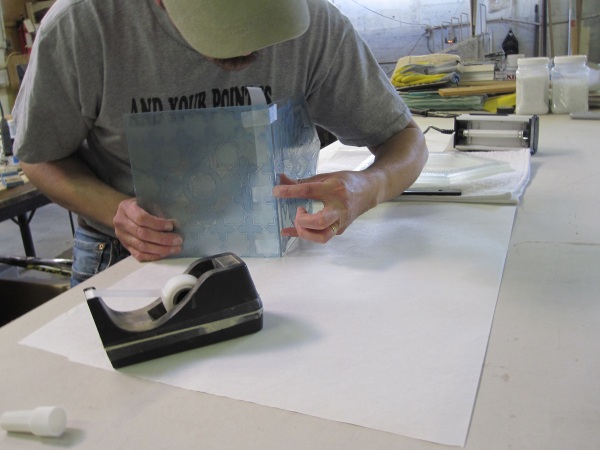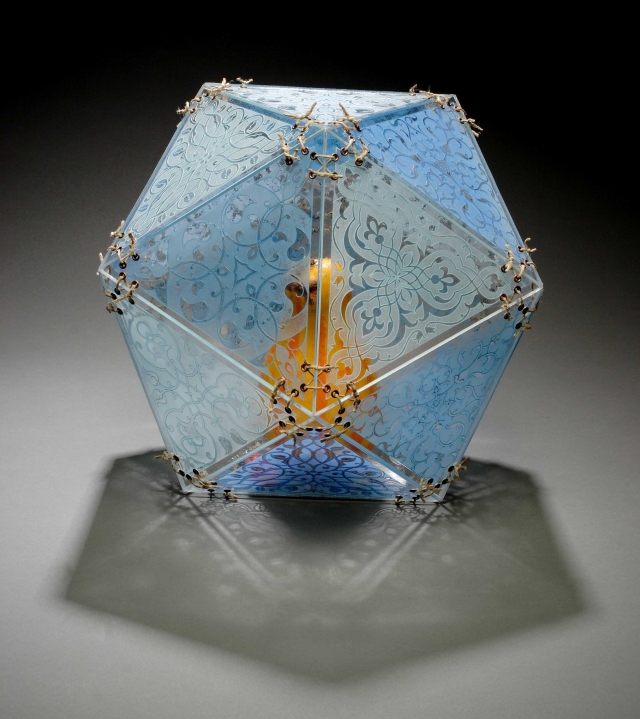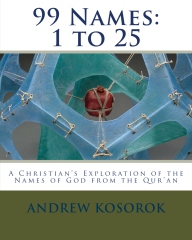
Working on Merciful
Several friends–Muslim, Quaker, Buddhist and every path in between–have asked for more background on why I started the 99 Names Project, and the process. Following is the first part of that, hopefully un-boring, explanation.
99 Names Project Introduction (Part 1)
When 9/11 happened, I was in something of a mental fog attending an art history class at BYU. My mother had passed away a few months earlier and I was her executor–with all the good vibes that position brings with it in a family of four strong-willed brothers and their equally strong-willed wives–and I was realizing I had to actually graduate. The realities of what happened in New York and elsewhere had a difficult time breaking into the net of the mundane filling my mind.
I had been taking a couple classes each term as I was slowly approaching my thesis project; because stained glass is not an official emphasis in the art program, I had worked out with the Powers That Be to take the one repeatable stained glass class over and over, and support my academic efforts with special projects in my job working full time at a stained glass studio. With my mother’s passing, I had to finish up and graduate as per her last request and I was busily mentally adjusting to the full time student mindset.
It was startling how quickly that receded into the background as the magnitude of what had happened unfolded onto the American conscious. It was also startling how quickly someone–a surviving someone–had to be blamed. I fully supported military efforts to punish the guilty, and joined my fellow Americans on the lookout for any and all who acted suspiciously.
Then something started nagging at my conscience. It wasn’t a group of evil people being blamed, it was an entire religion. A quarter of the world’s population, I was regularly told, wanted me hurting and dead. This was becoming socially sanctioned, media-driven religious persecution–something against which this country was originally formed. And it bothered me greatly.
People who are different can be frightening, and many times we react to fear through aggression. If we can warn off, threaten, or terrify the object of our fear, the situation (we think) is resolved. But the fear itself remains.
When fear is attached to a group of people, this aggressive reaction can quickly become the ugly realization of prejudice. When people in a neighborhood are afraid of losing jobs folks can become antagonistic towards immigrants, for example, and this behavior may become extended towards any group perceived as being unusual, different, or in any other way threatening.
Another way to deal with fear is to address it directly and learn about the thing which is so terrifying. Humans have a capacity termed pareidolia–the drive to impose order on or perceive design in randomness. The sounds of settling floorboards in an old house, for example, being resolved in the minds of listeners into bodiless footsteps is evidence of this ability. By learning about the things which frighten us, both the things itself and our reactions to it, the fear is replaced with understanding and ideally, appreciation.
My reaction, however, was not so reasoned. My country is one which supports and protects freedom of faith–this is a big part of why my ancestors came here, and why I support the men and women volunteering to put their bodies on the line for this and other freedoms. Realizing that attacking a religion to hide a fear and knowing Americans were doing this made me angry. Years ago the media attacked a young Democratic candidate for his Catholicism, and John F. Kennedy had to publicly address fears regarding the impact his faith would have on his policy decisions. Things like this should not happen in a country protecting religious freedom, and it was upsetting to me that it did.
However, what if THEY really did hate US, and wish us to die?
Before acting as if that were true, I thought it would make sense to find out what the THEY involved actually did believe. (Continued…)



2 Trackbacks / Pingbacks for this entry:
[…] FULL ARTICLE (WITH PHOTOS) FROM THE GHOST RIVER STUDIOS BLOG […]
[…] felt a more systematic approach was needed (for an introduction to the 99 Names Project please go here). After weeks of studying different avenues which could provide a “spine” for the […]